#Bert Schneider
Text
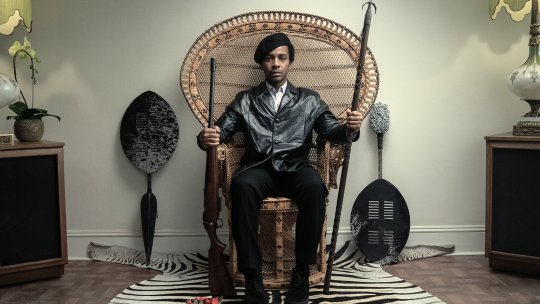
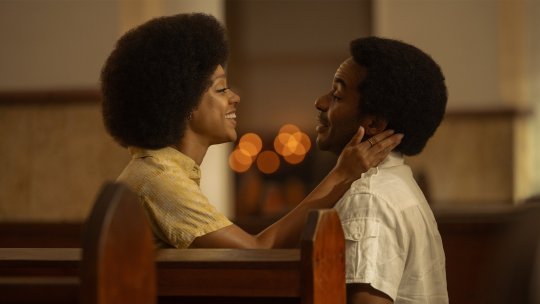


First Look at André Holland as Huey P. Newton In ‘The Big Cigar’
The Big Cigar tells the true story of how the Black Panther leader escaped from the FBI with the assistance of Hollywood producers and a fake movie production.
Cast includes André Holland as Huey P. Newton, Tiffany Boone as Gwen Fontaine, Jordane Christie as Bobby Seale, Moses Ingram as Teressa Dixon, and Alessandro Nivola as Bert Schneider.
The limited series premieres May 17 on Apple TV+.
#The Big Cigar#André Holland#Huey P. Newton#Tiffany Boone#Gwen Fontaine#Jordane Christie#Bobby Seale#Moses Ingram#Alessandro Nivola#Bert Schneider
45 notes
·
View notes
Text
New transcript of a phone call from Head (1968) pre-production discovered!
“Hi Mike, Micky, Davy, and Peter! It’s Bert and Bob here. We’ve finally decided on a plot for the new Monkee movie! It’ll be about the psychological torture. Hugs and kisses!”
#the monkees#michael nesmith#mike nesmith#peter tork#Davy jones#David jones#micky dolenz#bob rafelson#Bert Schneider#jack nicholson#head 1968#head (1968)
35 notes
·
View notes
Text
Head premiered on November 6, 1968. (Edit featuring the two Tork songs - in the studio and demo versions, respectively - and a line from the movie.)
“What’s happening as time goes on is that the movie [Head] is becoming a chronicle of an age. At the time, it was just a chronicle of the Monkees.” - Peter Tork, The Monkees Tale (1985)
Q: “What do you think of the music from the film ‘Head’?”
Peter Tork: "Well, since I wrote and produced two of the songs myself, I think it’s fine. I did ‘Can You Dig It?’ And ‘[Long Title:] Do I Have To Do This All Over Again.’” - Goldmine, 1982
“The funny thing is that the lyrics [to ‘Long Title: Do I Have To Do This All Over Again?’] came to me right out of the air. I was just playing those chord changes on the guitar, and I opened my mouth and that’s what popped out. The song was weirdly prophetic. I had no idea that was going to be my attitude about anything having to do with music when I wrote that song." - Peter Tork, Listen To The Band liner notes (more about "Long Title..." here)
“‘Can You Dig It’ is about the Tao. The hook line I wrote in my dressing room on the set [of the television series in 1967]. The chords for the chorus I’d written in college, and [they] had just stuck with me.” - Peter Tork, Head box set liner notes (more about "Can You Dig It?" here)
"I think they're ['Can You Dig It?' and 'Long Title...'] the best songs in the movie [Head]. I love both of them. I thought they were just terrific. He had plugged himself into that whole Stephen Stills connection and was working with those guys. I think they fit the movie better than anything did. When those two songs start up in the movie, it comes alive for me.” - Michael Nesmith, Head box set liner notes
“Thorkelson expressed a preference for the Monkees’ ‘Headquarters’ album, because it was the group’s first self-performed album […]. The soundtrack to the [...] movie ‘Head’ also is among Thorkelson’s favorites. ‘It was a little tinny, but back then I guess we were a little tinny,’ he said.
‘That movie will always look good,’ commented Thorkelson.” - The Bowling Green News Revue, May 24, 1979
"'When we made Headquarters, I thought I'd died and gone to heaven,' says Tork. 'My whole goal had been to be a member of a band that worked. The next thing I know we're making a movie and it doesn't have anything to do with the business of being in a band together.' [...] 'There's some weight behind the idea that Bob and Bert wanted to wreck the Monkees, to stop it cold in its tracks,' says Tork. 'I've never known for sure. Bert and Bob might have thought out loud: "Let's kill the Monkees!" Or they may have not thought so out loud but at some unconscious level, they were sick of the Monkees and wanted to do something else.'
[...] 'It was a joy seeing a movie being made, but I didn't like working for Bob Rafelson,' Tork says. 'I did what he told me, but I can't say that I ever had any heart connection with him.' His favorite scene, in which he recounts what he has learned from an Indian mystic, was actually directed by Nicholson.
[...] Tork has seen Head around 80 times but it took him years to work out why it bothered him so much. In the movie, the Monkees are hoodwinked, bamboozled, chased, assaulted, mocked, trapped in a black box and reduced to dandruff in the hair of actor Victor Mature, before ending up back where they started. In the words of the sardonic Nicholson-penned theme tune, 'So make your choice and we'll rejoice/ In never being free.'
'Most people are dazzled by the psychedelia, and that's fine, but for me finally the point of the movie is the Monkees never get out,' Tork says sadly. 'Which is to say Bob Rafelson's view of life is you never get out of the black box you're in. There's no escape.'
So how would a Peter Tork cut of Head end?
'There might have been a scene where we get out,' he says wistfully. 'We jump in the water and get away.'" - The Guardian, April 28, 2011
#Peter Tork#Tork quotes#Davy Jones#Micky Dolenz#Michael Nesmith#The Monkees#Monkees#Head (1968)#long read#<3#Tork songs#Can You Dig It#Long Title: Do I Have To Do This All Over Again?#Bob Rafelson#Bert Schneider#et al#can you queue it
50 notes
·
View notes
Text

Caption reads: Bert Schneider (R) escorts Charlie Chaplin from the Beverly Hills Hotel to the 44th Academy Awards on April 10, 1972.
10 notes
·
View notes
Video
youtube
LECTURE 14: HELP!/BEATLEMANIA AT HIGH TIDE: Inspired by the zany surrealism of HELP!, producer Bert Schneider and director/writer Bob Rafelson created The Monkees, television’s first psychedelic comedy aimed at youthful TV viewers. The show revolved around a fictional band, The Monkees, and the strange and often humorous adventures of its members, Davy Jones, Micky Dolenz, Michael Nesmith and Peter Tork. The end result was “a TV show about an imaginary band … that wanted to be the Beatles, [but] that was never successful,” according to Dolenz. The show went on the air on September 12, 1966 and proved to be a runaway hit for NBC. In 1966 and 1967, The Monkees would dominate the pop charts with several huge hits, including “Last Train to Clarksville,” “I’m a Believer,” and “Daydream Believer.” Dolenz was right that the band never eclipsed The Beatles, or even came close, but they enjoyed a massive level of success that none of the actor-musicians ever anticipated. The TV show itself lasted only two seasons, but has amassed a fiercely dedicated cult following over the years. (Note the not-too-subtle Kellogg’s cereal advertisements during the closing credits!)
#The Monkees (band)#The Monkees (TV show)#NBC#television#Davy Jones#Micky Dolenz#Michael Nesmith#Peter Tork#Bob Rafelson#Bert Schneider#HELP! (1965 film)#The Beatles#Kellogg's cereal#product placement
1 note
·
View note
Video
youtube
Lecture 9: (Theme From) The Monkees (1966-1968): The Monkees were a creation of American film director Bob Rafelson and movie producer Bert Schneider looking to cast a television program (The Monkees) about a fictional band. While the show lasted only two seasons (1966-68), it made Davy Jones, Micky Dolenz, Michael Nesmith, and Peter Tork famous, won two Emmy Awards and gained an intense cult following. Perhaps most importantly, it provided a platform from which to launch a real musical career. The program’s theme song, which spoke to the counterculture youth with verses such as “We’re the young generation, and we’ve got somethin’ to say,” was itself a big hit.
#The Monkees#television#pop culture#1960s#Davy Jones#Micky Dolenz#Michael Nesmith#Peter Tork#Bert Schneider#Bob Rafelson#Counterculture
0 notes
Text

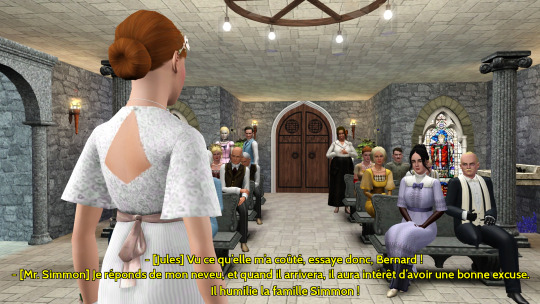






Printemps 1918, Al Simhara, Égypte (12/20)
Pour que vous compreniez ce qu’il s’est passé, il faut que je vous parle d'abord un peu de la politique actuelle du gouvernement canadien. En décembre dernier ont eu lieu les premières élections fédérales où les femmes ont eu le droit de vote. L’enjeu majeur de ces élections était la question de la conscription obligatoire, très populaire chez les Anglophones, très attaquée par les Francophones. Je n’ai pas voté lors de ces élections, mais peut-être que j'aurais dû. Le candidat unioniste qui a été élu à la mi-décembre, Sir Robert Borden, est un partisan de la conscription. Au cours du mois de janvier, la Loi sur le Service militaire a été mise en application : tous les hommes de vingt à quarante-cinq ans peuvent donc être conscrits de force dans l’armée.
[Transcription]
Napoléon Bernard : Mais où est-il, enfin ? Nous avons presque une heure de retard ! Je vais finir par annuler la cérémonie.
Jules Le Bris : Vu ce qu’elle m’a coûté, essaye donc, Bernard !
Peter Simmon : Je réponds de mon neveu, et quand il arrivera, il aura intérêt d’avoir une bonne excuse. Il humilie la famille Simmon !
Louise Le Bris : Je suis certaine qu’il va arriver, Révérend.
Louise Le Bris : Il a dû avoir un retardement... Ou peut-être qu’il s’est blessé sur la route…
Napoléon Bernard : Quelle route ? Il habite sur la jetée en bas de la colline, c’est à moins d’un kilomètre d’ici !
Louise Le Bris : Dans tous les cas, il doit avoir une bonne raison.
Lucrèce Le Bris : Faut-il que j’aille le chercher ?
Françoise Simmon : Inutile, ma fille est déjà partie. Elle sera de retour bientôt avec une explication. En attendant, il est inutile de nous exciter.
#Jules Le Bris#Eugénie Bernard#Louise Le Bris II#Earnest Simmon#Napoléon Bernard#Peter Simmon#Françoise Le Bris#Lucrèce Le Bris#Adèle Schneider#Frédéric Rumédier#Bert Simmon#Ada Simmon
7 notes
·
View notes
Text

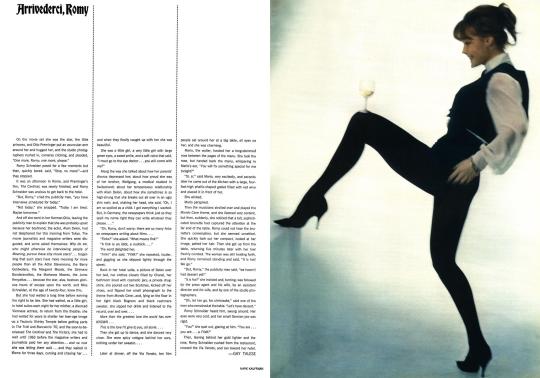






Esquire, 1960-1964
#photography#1960#esquire#gary cooper#romy schneider#john ford#john wayne#bert stern#mark kauffman#don ornitz#aaron shikler#john r. hamilton#60s#old hollywood#vintage#fave#...
3 notes
·
View notes
Photo

Poet-lyricist Toni Stern photographed by Henry Diltz c. 1969
#toni stern#henry diltz#poets#lyricists#carole king#pop#soft rock#classic rock#also dated bert schneider and james taylor apparently#she's adorable c:
46 notes
·
View notes
Text
my fave moment in some of this candid footage is when they're taking pics after their emmy win and peter has davy step forward bc he's too short 😭🥺




also them being annoying to bert schneider & bob rafelson. very cute


#head in my hands..... peter............. Peter#i love the candid stuff it gets me so fucked up thinking about how they were all filmed and photographed so much#like most of that was for promotion (magazine pics etc) or the show. but incidental footage feels so special because we see the monkees#as just like. the people themselves. in this moment they're actors accepting their emmys and goofing off#monkees#oc
79 notes
·
View notes
Text
Cabaret's Shifting Lead Placement
Welcome to another rambling theatre history lesson with DroughtofApathy. Today we're going to examining the fascinating history of Cabaret's ever-changing lead roles.
Ground rule: Tony eligibility for Lead Actor/Actress is first determined by "above-the-title" billing in the show's opening night Playbill. It was a far stricter guideline in the past, as you'll see. These days, many lead roles aren't put above the title (ex. Hadestown, Kimberly Akimbo, etc.) but will be placed in lead categories either because it's obviously a lead, or because producers lobby for it. Conversely, actors can have "above-the-title" billing and be in featured roles, usually because they're major names like Angela Lansbury and Elaine Stritch, who were both Madame Armfeldt in the 2009/2011 revival of A Little Night Music. In which case, producers will usually submit them as featured.
When Cabaret opened on Broadway in 1966, Jill Haworth (Sally), Jack Gilford (Herr Schultz), and Bert Convey (Cliff) got top billing with Lotte Lenya (Fraulein Schneider) in the coveted "and" slot just below. Note who's missing. That's right. When the show premiered, Joel Grey (Emcee) was just a regular old featured role.


Left: opening night playbill billing. Right: post-Tony rebilling with Joel Grey's ascension.
At the 1967 Tonys, Jack Gilford (Herr Schultz) and Lotte Lenya (Fraulein Schneider) were nominated as Leading Actor/Actress, respectively, while Joel Grey and Edward Winter (Ernst Ludwig) were both in Featured. Jill Haworth (Sally) was not nominated, but would have been eligible for Lead as she had "above-the-title" billing. At the time, Joel Grey was just another working actor. Not so after Cabaret. His performance elevated both the role and his billing, thus transforming the Emcee into a Leading Role from then on.
Subsequent productions would focus more on Sally and the Emcee, while Schultz and Schneider (and the non-singing Cliff) would become featured roles. However, the "above the title" Tony ruling was far stricter back in the day, leading Sally (this time Alyson Reed) to once more be featured in the 1987 revival.


Left: opening night Playbill billing. Right: poster billing
In 1987, Joel Grey was given the sole "above-the-title" billing with Alyson Reed in the next featured spot. Though Sally was, like 1966, technically a lead role, she was nominated in featured at the Tonys that season. (Grey was not eligible as he was reprising his role.) In this production, Regina Resnik (Schneider) and Werner Klemperer (Schultz) both got fancy featured billing and nominations in their respective categories. As Cliff, Gregg Edelman got the "and" billing, but in this case it was less elevated than either Resnik or Klemperer (note the boxes). Edelman was still early-career at this point, and not yet a "name" but Cliff was still considered an elevated role in the company.
By 1998, however, the roles as we currently think of them had finally slotted into place. Alan Cumming (Emcee) won for Best Actor, Natasha Richardson (Sally) for Best Actress and Ron Rifkin (Schultz) for Featured Actor. Mary Louise Wilson (Schneider) was nominated in Featured Actress. Richardson also received left-side billing, as she was a larger name (arguably) than Cumming at the time.

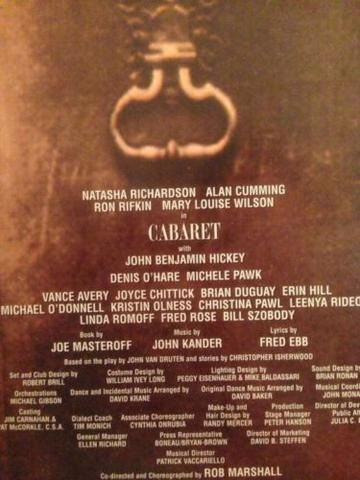
Left: opening night Playbill billing. Right: lobby poster billing
But though nominations seemed to make sense, it still didn't jive with billing placement. In the 1998 production, Richardson, Cumming, and Rifkin all had "above-the-title" with Wilson in the featured "and" slot. Despite this placement, Rifkin went in for Featured. Producers can lobby the Tony committee for actor placement if they think it fitting, and these days we're a lot more fast-and-loose with the definitions. Note however, how Wilson has "above-the-title" billing in the lobby board. This was presumably a contractual renegotiation that happened post-Tonys. Note how Denis O'Hare (Ernst) and Michele Pawk (Kost) have their own line below John Benjamin Hickey (Cliff). All three were/are modest, but known, names in the theatre world, about equal to one another, at least at the time.
By 2014, the old couple (Schultz and Schneider) no longer would get top billing. Alan Cumming only built upon Joel Grey's foundation to fully elevate the Emcee role into the undisputed leading man, with Sally the star-vehicle leading lady. Between the 1998 and up until the recent revival, the older couple's story--and Cliff's importance--had taken a backseat.
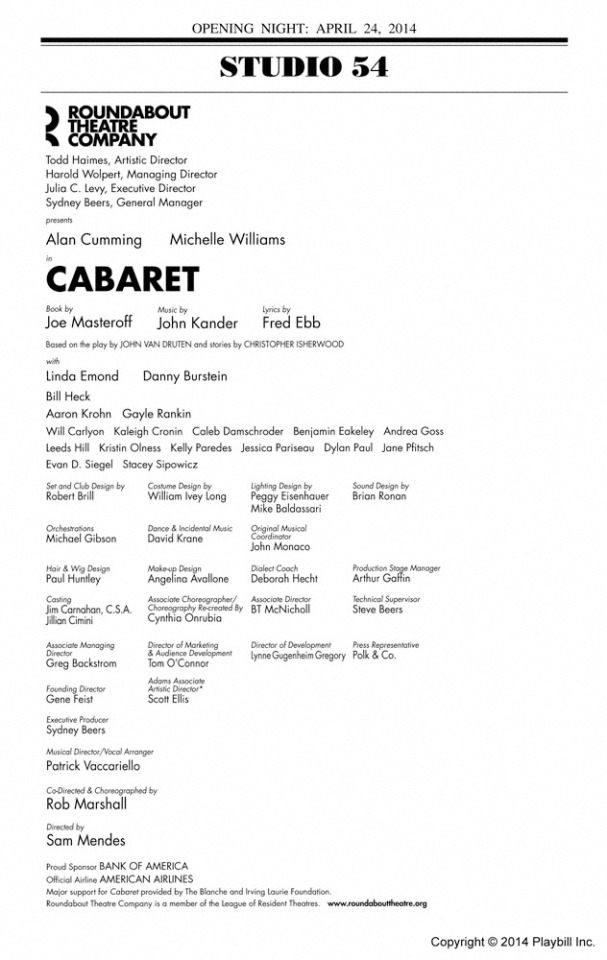

Left: opening night Playbill billing. Right: poster billing.
In 2014, the revival won no Tonys, but was nominated for both Featured Actor and Actress (Danny Burstein and Linda Emond, respectively). Cumming was not eligible as, like Joel Grey before him, he was reprising his role. This time, with a Tony in his pocket, and a much bigger name than 16 years prior, he got left-side billing. Emond and Burstein received equal line billing below the title, with Emond getting the left. Though they were roughly equal in the theatre world, and Burstein had a slight edge in terms of Tony noms, I'd guess Emond got the left owing to her larger screen presence/notoriety. In the poster, Bill Heck (Cliff) is left out of featured billing entirely, as are Aaron Krohn (Ernst) and Gayle Rankin (Kost).
Now we come to our latest revival, number four. Though it's still too early for nominations, we can assume Eddie Redmayne (Emcee) and Gayle Rankin (Sally) will be leads with all others featured. Historically, Schultz and Schneider are roles that receive nominations, and the Emcee a role that wins. Will that hold in a wildly over-crowded season?
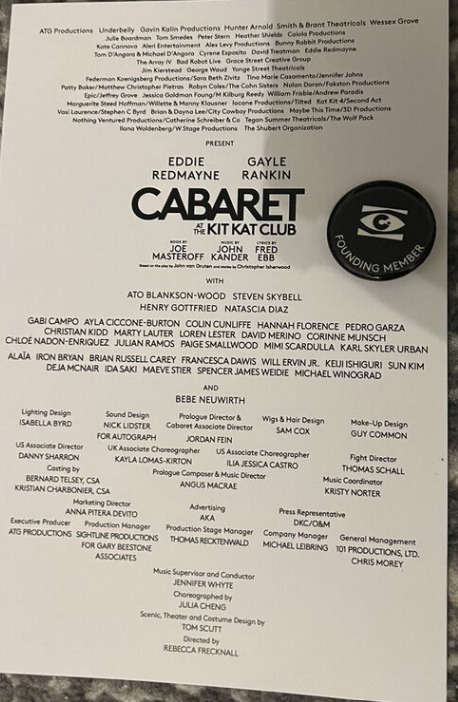

Left: first preview Playbill insert. Right: billing poster outside the theater.
Once more deviating from past productions, the roles of Cliff (Ato Blankson-Wood), Ernst (Henry Gottfried), and Kost (Natascia Diaz) are plucked back out of the company to be given featured billing. This time, Steven Skybell (Schultz) is on even footing with Cliff, even slightly under with his right-side billing. This would be the least "elevated" billing any Schultz has ever gotten. Skybell is a respected theatre veteran but not quite a household name, even in theatre circles. Blankson-Wood, meanwhile, is a recent Tony nominee. It's all politics when it comes to billing.
Here, Bebe Neuwirth (Schneider) is given the coveted "and" poster billing, no surprise. Of the featured roles, she's inarguably the biggest name. A few decades ago, that might have been enough to get her above the title, but these days it's less common that a solidly featured role would get that (unless you're Patti LuPone in Company, and Bebe doesn't have quite the same sway or ego).
This, to me, seems like the most obvious case of industry politics and agent negotiation at play, and usually actors (and egos) aren't even involved in the conversation. Skybell and Neuwirth aren't on the same level, though their characters are. My guess here is that producers want to bill their sole two-time Tony winner separately, and Skybell's agents know he isn't big enough to dispute that.

Now, let's take a look at this marketing design. Redmayne's name is left-billed despite being above Rankin's head. While annoying for those of us audience members who might just see this as a design flaw, this is all contractual, negotiated to death. Redmayne also gets front-and-center positioning, while Rankin is in the background, off-center, but she gets left-side position, which isn't as minimizing as right-side would. Left-billing is given to the bigger name because English reads left to right. These are the kinds of things I think about when I see marketing ads and playbills.
#cabaret#cabaret broadway#history lessons with doa#ask me about the sweeney todd teaser key art please it's an even better example of contracts at play#yeah i *did* stalk the ebay pages until someone put a playbill picture up for listing i'm just that dedicated to the craft#bebe neuwirth#joel grey#alan cumming#it's 9:30 a.m. but we're going live with this because why the fuck not?
15 notes
·
View notes
Text
now just my fav bits from micky’s commentary:
“he always wanted to be a small little doll” -> referring to davy
little richard was a monkees fan and came to their shows????
as always micky showing his true colours as the og mike girl and going on and on about how great his music is
“hey look it’s bert schneider” ->referring to the alligator(?) on the screen during the interpretive dance sequence
“that’s what happens when you have an hour special and only about four minutes of good material” -💀
“I must have blocked this out” -💀
and then he explains the last big jam session scene was possible thanks to some people going down to sunset boulevard and telling every one they were having a party and to come to the studio
#micky thank you for making this special even better god bless you dude#micky dolenz#33 1/3 revolutions per monkee#the monkees
24 notes
·
View notes
Note
I may or may not have body-slammed Mike into a locker and locked him in, but I get the part, I'm nervously waiting outside the door, the only thing I can imagine going wrong is being turned away for being a girl, but nonetheless, I wait to be called. suddenly, I hear them say my name. I step in, and there they are. Bert Schneider and Bob Rafelson.
"hi, I'm Raya Fri-"
"are those fcking Jorts"
I die of embarrassment.
i mean even if they said this to you, it would still be nicer than what they ACTUALLY said to peter
#poor peber 😭😭😭#also if mike weren't there with his falling off pocket i would be the one in the worst jeans#jorts are socially acceptable. but i wear my brother's hand-me-down jeans and they are both too long and too wide for me
6 notes
·
View notes
Photo



The Monkees with... (photo 1) Bert Schneider, George Albert (of Cashbox), Don Kirshner, and Bob Rafelson (photo published in Cashbox on September 24, 1966); with Schneider, Rafelson, and Bob Fishof (tour promoter), backstage at the Greek Theatre on September 7, 1986 (photos by Henry Diltz).
“I didn’t have much to do with Kirshner and that which I did have to do with him was strained, difficult and incomprehensible. Schneider I love; he’s a hero of mine. Rafelson, the less said about, the better.” - Peter Tork, Goldmine, May 1982
“When I recorded ‘Can You Dig It,’ the guitar solo originally ran about three or four minutes all by itself. We cut that back to a minute and a half. Bob Rafelson took a pair of scissors and snipped off the end of it. He didn’t ask me to shorten it, which I would have been glad to do. He just chopped it off. Son of a bitch! I have a lot of gripes about that, but that’s neither here nor there.” - Peter Tork, Blitz!, May/June 1980 (x)/x)
“There was one guy, Steve [Stills], whom I liked enormously. Unfortunately he wasn’t quite right, but he had musical intelligence and I went so far as to ring him up and ask him along again. When he realized he wasn’t going to make it he suggested I get in touch with someone he knew, a certain Peter Thorkelson. I might have said ‘Yeah’ and forgotten about it — particularly as this Peter Thorkelson hadn’t even answered the ad and we had a lot of guys who had. Yet I remember I went to great lengths to contact him. I found him working as a dishwasher — not even as a musician, so you can imagine it took a while tracing him. But when I heard him, I knew at once he was right. I was knocked out.” - Bob Rafelson, NME, August 12, 1967 (x)
“Kirshner is shallow, bigoted and minimally concerned with human values. Kirshner felt that by handing us checks he could win our undying loyalty. He had no idea what was important to us.” - Peter Tork, Rolling Stone, 1976
“[M]y personal belief is that Bob [Rafelson] is an evil-minded man. He likes to bring people down. Bob was often unsupportive as a human being and distinctly negative — and I was on the short end of that." - Peter Tork, MOJO, June 2002 (read more x)
“The movie portrays them with not so much sweetness and brightness [as the TV show]. It’s a much heavier and far-out thinking group. I wouldn’t call it uncharitable. I thought it was expanding my sense of who they were. There’s a boxing scene in which Micky says, ‘Take this, you dummy.’ Suddenly the music changes and Peter appears in the corner, Christ-like, and says, ‘Micky, I’m the dummy. I’m always the dummy.’ The point was that he was always asked to be the dummy, so here he’s acknowledging it. But he’s also the one who’s given the longest speech in the movie about spiritual evolution, which he’s learned from the guru in the steam room. I was trying to give him a chance to be himself, but in a symbolic way. He is that way today, by the way. In other words, The Monkees became what they really were.” - Bob Rafelson, MOJO, June 2002 (x)
#The Monkees#Peter Tork#Michael Nesmith#Mike Nesmith#Davy Jones#David Jones#Micky Dolenz#1960s#1966#Bert Schneider#Don Kirshner#Bob Rafelson#60s Tork#<3#Tork quotes#80s Tork#Peter deserved better#long read#Tork songs#Can You Dig It#been typing up a lot of interviews/articles so long reads will be frequent#1986#Cashbox#Rolling Stone#NME#MOJO Magazine#Biltz! Magazine#Goldmine Magazine#can you queue it
43 notes
·
View notes
Text
Nightmare blunt rotation: eric kripke -> bob rafelson -> sera gamble -> bert schneider
4 notes
·
View notes
Text
Todo lo que se ve es auténtico, o casi… “The Big Cigar: La Gran Fuga”
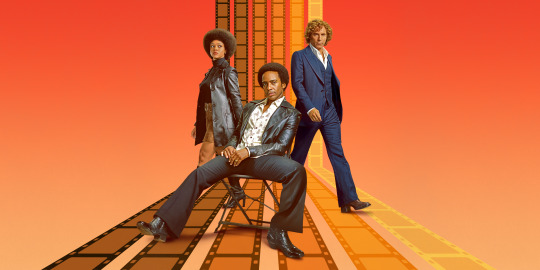
Basada en un artículo periodístico de Joshuah Bearman, la miniserie narra la sorprendente historia real en la que una revuelta social causó su propia revuelta en Hollywood: la increíble aventura de Huey P. Newton, fundador de las Panteras Negras, que escapó del FBI a Cuba con ayuda del afamado productor Bert Schneider gracias a un elaborado plan que incluía rodar una falsa película y en el que cada paso salía mal.
Estreno: 17 de mayo de 2024 en Apple TV+.
youtube
La miniserie cuenta con las actuaciones de André Holland, Alessandro Nivola, Tiffany Boone, P. J. Byrne, Marc Menchaca, Moses Ingram, Rebecca Dalton, Olli Haaskivi, Jordane Christie y Glynn Turman.

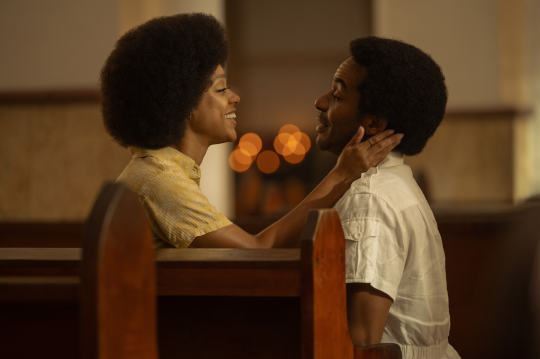
#The Big Cigar: La Gran Fuga#André Holland#Alessandro Nivola#Tiffany Boone#P. J. Byrne#Marc Menchaca#Moses Ingram#Rebecca Dalton#Olli Haaskivi#Jordane Christie#Glynn Turman#Series#Apple TV+
0 notes